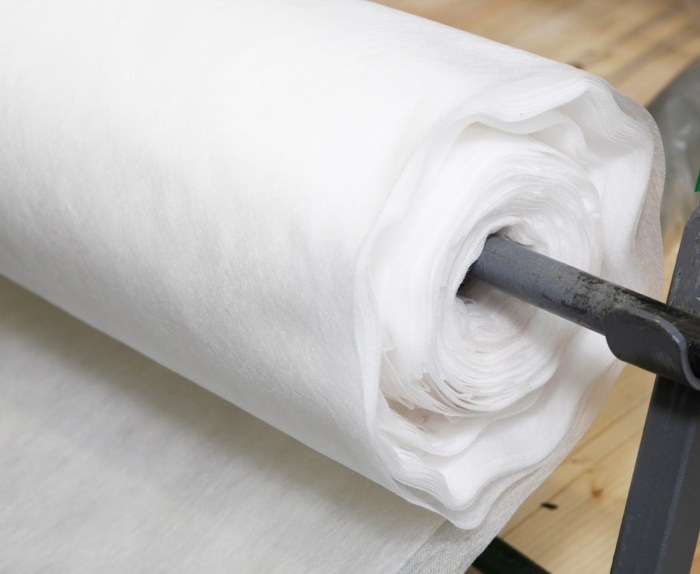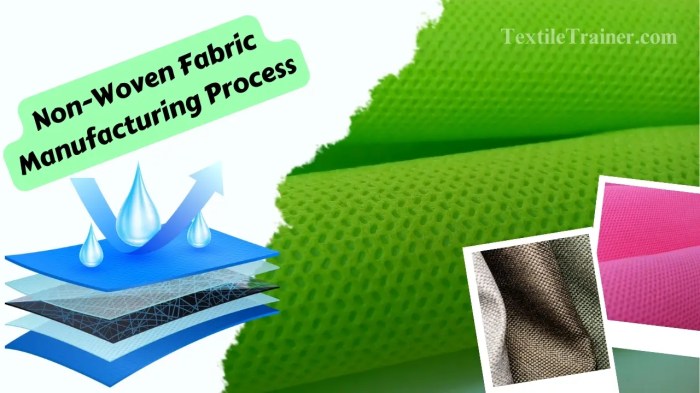
Textile Industry Overview

Textiles & Nonwovens – The textile industry has a rich history dating back thousands of years, with evidence of textile production found in ancient civilizations around the world. Over time, the industry has evolved significantly, driven by technological advancements and changing consumer demands.
Today, the global textile industry is a vast and diverse sector, encompassing a wide range of activities, from the production of raw materials (such as cotton, wool, and synthetic fibers) to the manufacturing of finished products (such as clothing, home furnishings, and industrial textiles).
The industry is highly globalized, with production and consumption taking place across the world.
Key Sectors within the Textile Industry
The textile industry can be divided into several key sectors, each with its own unique characteristics and market dynamics:
- Apparel:This sector includes the production of clothing and accessories for both men and women. It is one of the largest and most visible sectors within the textile industry.
- Home Furnishings:This sector includes the production of textiles used in the home, such as curtains, upholstery, and bedding. It is a growing sector, driven by increasing consumer demand for comfortable and stylish home environments.
- Technical Textiles:This sector includes the production of textiles for industrial and technical applications, such as filtration, medical, and protective clothing. It is a rapidly growing sector, driven by the demand for advanced materials with specific properties.
Nonwoven Fabric Market
Nonwoven fabrics are engineered materials made from fibers or filaments that are bonded together by chemical, mechanical, or thermal processes, without the need for spinning, weaving, or knitting. They offer unique properties such as high absorbency, softness, breathability, and disposability, making them suitable for a wide range of applications.
Global Nonwoven Fabric Market Size and Growth Rate
The global nonwoven fabric market is estimated to reach a value of approximately USD 47.5 billion by 2028, expanding at a CAGR of 6.4% from 2021 to 2028. The growth is attributed to increasing demand from various end-use industries, including healthcare, hygiene, filtration, and construction.
Regional Distribution
Asia-Pacific is the largest market for nonwoven fabrics, followed by North America and Europe. The region’s growing population, rising disposable income, and increasing healthcare awareness contribute to the market’s expansion.
Key Manufacturers
- Fibertex Personal Care
- Johns Manville
- Freudenberg Group
- Kimberly-Clark
- Toray Industries
Emerging Trends
Sustainability is a major trend in the nonwoven fabric industry, with manufacturers focusing on developing eco-friendly and biodegradable materials. Additionally, there is a growing demand for nonwoven fabrics with advanced functionalities, such as antimicrobial, flame retardant, and moisture-wicking properties.
Future Prospects
The future of the nonwoven fabric industry looks promising, driven by technological advancements and increasing demand from emerging economies. The development of innovative materials and the expansion of applications in healthcare, hygiene, and other industries are expected to fuel market growth in the coming years.
Textile Manufacturing Processes
Textile manufacturing is a complex process that involves multiple stages, from fiber production to fabric finishing. Each stage requires specialized technologies and machinery, and the industry has a significant environmental impact. In this section, we will explore the different stages of textile manufacturing and discuss the environmental considerations and sustainable practices adopted by the industry.
Fiber Production
The first stage of textile manufacturing is fiber production. Fibers are the basic building blocks of textiles, and they can be classified into two main types: natural fibers (e.g., cotton, wool, silk) and synthetic fibers (e.g., polyester, nylon, acrylic). Natural fibers are derived from plants or animals, while synthetic fibers are produced from petrochemicals.
The production of natural fibers involves cultivation, harvesting, and processing. Cotton, for example, is grown in tropical and subtropical regions and harvested when the bolls are mature. The bolls are then ginned to remove the seeds, and the fibers are baled for further processing.
The production of synthetic fibers involves chemical processes. Polyester, for example, is produced from ethylene glycol and terephthalic acid. The raw materials are heated and polymerized to form a molten polymer, which is then extruded through spinnerets to form fibers.
Yarn Production
The next stage of textile manufacturing is yarn production. Yarn is a continuous strand of fibers that is used to create fabrics. There are two main methods of yarn production: spinning and twisting.
Spinning involves drawing out and twisting fibers to form a yarn. The fibers are first aligned and then twisted together to create a strong and durable yarn. The thickness and strength of the yarn depend on the type of fiber used and the amount of twist applied.
Twisting involves combining two or more yarns together to create a stronger and more durable yarn. The yarns are twisted together in opposite directions to create a balanced yarn that is less likely to untwist.
Fabric Production
The final stage of textile manufacturing is fabric production. Fabrics are created by weaving, knitting, or bonding yarns together. Weaving involves interlacing two sets of yarns at right angles to each other to create a fabric. Knitting involves looping yarns together to create a fabric.
Bonding involves using heat or chemicals to fuse yarns together to create a fabric.
The type of fabric produced depends on the type of yarn used, the weave or knit pattern, and the finishing processes applied.
Fabric Finishing
Fabric finishing is the final stage of textile manufacturing. Finishing processes are used to improve the appearance, feel, and performance of fabrics. Some common finishing processes include dyeing, printing, bleaching, and softening.
Dyeing involves adding color to fabrics using dyes. Printing involves applying designs or patterns to fabrics using inks or pigments. Bleaching involves removing impurities from fabrics to make them whiter or brighter. Softening involves treating fabrics with chemicals to make them softer and more comfortable to wear.
Environmental Impact of Textile Manufacturing
Textile manufacturing has a significant environmental impact. The industry consumes large amounts of water, energy, and chemicals, and it generates wastewater and solid waste. The production of synthetic fibers, in particular, is a major contributor to greenhouse gas emissions.
The textile industry is increasingly adopting sustainable practices to reduce its environmental impact. These practices include using recycled materials, reducing water and energy consumption, and using eco-friendly dyes and chemicals.
Sustainable Practices in the Textile Industry
The textile industry is increasingly adopting sustainable practices to reduce its environmental impact. These practices include:
- Using recycled materials
- Reducing water and energy consumption
- Using eco-friendly dyes and chemicals
- Implementing zero-waste manufacturing practices
- Promoting fair labor practices
By adopting sustainable practices, the textile industry can reduce its environmental impact and create a more sustainable future.
Textile and Nonwoven Applications
Textiles and nonwovens find widespread applications across diverse industries, each with specific requirements and benefits. Their versatility and unique properties make them indispensable materials in various fields.
Apparel Industry
- Clothing:Textiles are the primary materials for clothing, providing comfort, protection, and style. They offer a wide range of choices in terms of fabrics, textures, colors, and patterns.
- Accessories:Textiles are used to create accessories such as bags, scarves, hats, and gloves, adding style and functionality to outfits.
- Home Textiles:Textiles are extensively used in home décor, including curtains, upholstery, bed linens, and tablecloths, providing comfort, aesthetics, and privacy.
Healthcare Industry
- Medical Textiles:Nonwovens are used in medical applications due to their sterility, absorbency, and breathability. They are used in bandages, surgical gowns, and drapes.
- Implants:Textiles are used in artificial implants, such as vascular grafts and heart valves, due to their biocompatibility and durability.
- Wound Care:Nonwovens are utilized in wound care dressings, providing a moist environment for healing and protecting the wound from infection.
Automotive Industry
- Upholstery:Textiles are used in vehicle upholstery, providing comfort, aesthetics, and durability.
- Airbags:Nonwovens are used in airbags due to their ability to absorb energy and inflate rapidly in the event of a collision.
- Filtration:Textiles are used in air and oil filters, ensuring the cleanliness and efficiency of automotive systems.
Construction Industry, Textiles & Nonwovens
- Geotextiles:Nonwovens are used as geotextiles in civil engineering applications, providing separation, filtration, and reinforcement for soil and structures.
- Roofing Membranes:Nonwovens are used in roofing membranes, providing waterproofing, protection, and insulation.
- Insulation:Textiles are used as insulation materials, providing thermal protection in buildings.
Innovative Applications
- Smart Textiles:Textiles integrated with sensors and electronics, enabling functionalities such as monitoring vital signs, regulating temperature, and interacting with devices.
- Biodegradable Nonwovens:Nonwovens made from sustainable materials, such as plant fibers or biodegradable polymers, reducing environmental impact.
- Nanotextiles:Textiles engineered at the nanoscale, offering enhanced properties such as antimicrobial resistance, stain resistance, and improved durability.
Research and Development in Textiles and Nonwovens: Textiles & Nonwovens

The textile and nonwoven industries are constantly evolving, driven by technological advancements and research and development (R&D) initiatives. These efforts play a crucial role in developing innovative materials, enhancing sustainability, and pushing the boundaries of textile applications.
Smart Textiles
Smart textiles incorporate electronic components, sensors, and other advanced technologies to provide enhanced functionality and performance. These textiles can respond to environmental stimuli, monitor vital signs, and even generate energy. They have applications in healthcare, sportswear, military, and other industries.
Bio-based Materials
Bio-based materials are derived from renewable resources, such as plants, animals, or microorganisms. These materials offer sustainable alternatives to traditional synthetic fibers and can reduce the environmental impact of textile production. Examples include biodegradable nonwovens, cellulose-based fibers, and plant-based dyes.
Nanotechnology
Nanotechnology involves the manipulation of materials at the nanoscale. In textiles and nonwovens, nanotechnology enables the creation of materials with unique properties, such as enhanced strength, water repellency, and antibacterial activity. It has applications in protective clothing, medical textiles, and filtration systems.
Role of R&D in Innovation and Sustainability
R&D is essential for driving innovation and sustainability in the textile and nonwoven sector. It enables the development of new materials, processes, and technologies that address industry challenges and meet consumer demands. By exploring sustainable materials, reducing waste, and optimizing production processes, R&D contributes to the industry’s environmental and social responsibility.
Examples of Successful Research Projects
- Development of self-cleaning textiles that repel dirt and stains.
- Creation of bio-based nonwovens for use in medical wound dressings.
- Integration of nanotechnology to enhance the durability and water repellency of protective clothing.
These research projects demonstrate the transformative impact of R&D on the textile and nonwoven industries, leading to innovative materials and solutions that benefit both businesses and consumers.